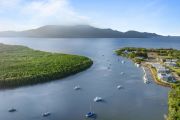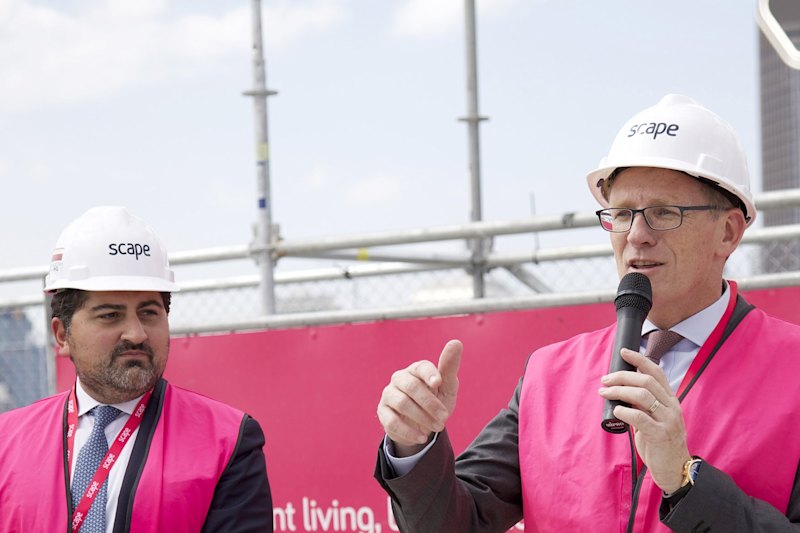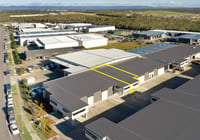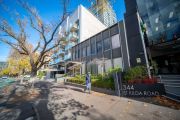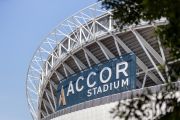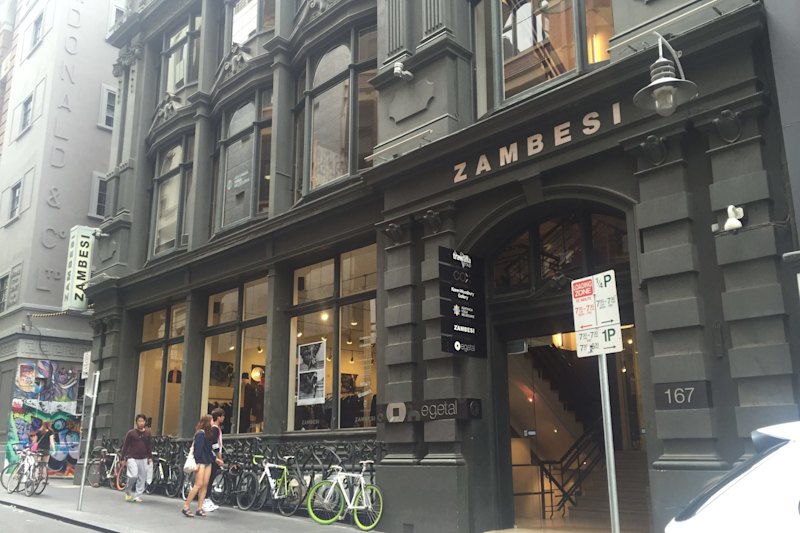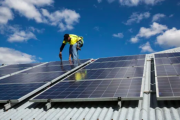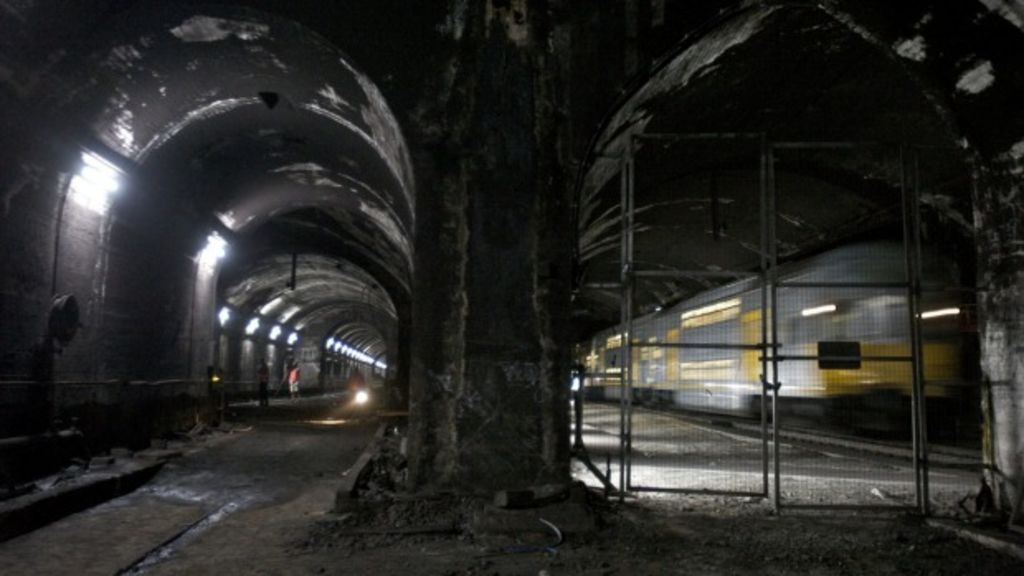
Subterranean Sydney: the city's secret life below the surface
Garry Maddox
Like cavers, miners and rabbits, Sydneysiders regularly head underground.
We drive under the Harbour and through tunnels on the way to parking several storeys underground. We walk through shopping centres that are below ground, take the train on the City Circle and eat and drink in underground food courts and small bars.
Forget those over-rated commodities sunlight and fresh air. Just getting around the city can make life below street level seem normal.
But there are other sides to subterranean Sydney: the little-known places where the city has an unexpected life.
These places fascinate urban explorers such as the secretive group called the Cave Clan who have been breaking into tunnels, stormwater drains and underground reservoirs since the 1990s. And, more recently, a younger generation of tunnels rats who are more interested in taking photographs for Instagram.
One tunnel rat, Ben*, raves about walking through the Chatswood to Epping railway tunnel before trains started running in 2009.
“We walked for a solid kilometre and a half,” he says. “It was really hot down there. And scary.”
Even scarier was an attempt by Ben and fellow tunnel rats to walk through the railway tunnel from Central to Sydney Airport while trains were running. Possibly luckily, they were caught by security guards before getting too far.
Ben is keen to try a mythic stormwater drain that reputedly leads from near Circular Quay to underneath the Sydney Opera House, offering a unique view of the Harbour. “You can only do it at low tide,” he says.
The dangers of recreational trespassing were underscored when two people were killed in a flash flood in the eastern suburbs in 2008. They were painting graffiti in what’s known as the Fortress, a stormwater drain that runs for more than two kilometres and opens into caverns up to 10 storeys high between South Coogee and Lurline Bay.
Even in a city without the catacombs or ancient buried structures of older parts of the world, there are other subterranean sites that remain little-known.
Central Station
On a typical day, 150,000 people pass through the city’s main railway station. But precious few know about a securely locked platform that has been dark for close to four decades.
Down there – sandwiched below a concourse and above platforms 25 and 26 – the air is thick and hot. Rubbish is piled in an empty life well next to platform to nowhere, with a ladder leading down to where trains have never run.
 A long tunnel under Central’s country train platforms that leads off to an old cell and band room. Photo: Dallas Kilponen
A long tunnel under Central’s country train platforms that leads off to an old cell and band room. Photo: Dallas Kilponen
Staff call it the ghost platform because of stories about maintenance workers hearing children playing when they visit. But with just 10 metres of tunnels at either end, the platform is sealed from outside life.
Sydney Trains’ head of operations, Tony Eid, says the platform was originally intended to be used for the Eastern Suburbs Railway, allowing trains to pass on top of each other in opposite directions, but plans changed so it has never been used.
And below the country train platforms, Central has service tunnels where staff wheel garbage bins and a strange long corridor with a cell off to one side (compete with a chain to restrain anyone who broke the law on a train in less enlightened times) and a band room (where railway musicians store their instruments).
 The unused tunnels at St James station when they were being discussed as part of a possible new Metro system for Sydney in 2008. Photo: Nick Moir
The unused tunnels at St James station when they were being discussed as part of a possible new Metro system for Sydney in 2008. Photo: Nick Moir
St James Station
The unused tunnels at St James have a colourful history.
Built for an early concept for an eastern suburbs line, they housed a mushroom farm in the 1930s. During World War II they were designated as air raid shelters if the city came under attack and used by the RAAF No 1 Fighter Sector, later known as Air Defence Headquarters.
“There used to be a set of stairs in Hyde Park as one entrance,” says Eid. “They’d go down this wooden set of stairs about four storeys.
“Then when they’d get to where the air-raid shelters were, they’d continue another two storeys down to a large room with several tables, Morse Code set-ups and aviation maps, where they’d co-ordinate air traffic and ships.”
After the war, the shelters were dismantled and the stairwell near Museum Station was damaged by fire then filled with rubble.
St James also has an underground lake that is reputedly a kilometre long, seven metres wide and up to six metres deep.
There are also disused tunnels at North Sydney station (originally designated for a possible northern beaches train line) and Redfern (planned to connect with Central’s ghost platform).
 Sydney Water’s Yvonne Kaiser-Glass leads a tour of the Tank Stream in 2013. Photo: Dean Sewell
Sydney Water’s Yvonne Kaiser-Glass leads a tour of the Tank Stream in 2013. Photo: Dean Sewell
The Tank Stream
One of the best-known features of underground Sydney, the Tank Stream was the city’s first water supply after European settlement.
It was originally a creek that became an open sewer, leading to it being covered in the 1860s. Now it’s a stormwater drain that is open regularly for public tours.
Sydney Water’s heritage expert Phil Bennett says the top of the tunnel is just 1.5 metres below road level so walkers hear the traffic rumble as they head upstream from Australia Square to Hunter Street.
 Bondi Waste Water Treatment plant manager Tony Williamson (left) and production team leader Daniel Toole at the Eastern Safe Haven or safety escape that opens on to the ocean at North Bondi. Photo: Kate Geraghty
Bondi Waste Water Treatment plant manager Tony Williamson (left) and production team leader Daniel Toole at the Eastern Safe Haven or safety escape that opens on to the ocean at North Bondi. Photo: Kate Geraghty
Bondi waste water plant
Helping keep Sydney’s beaches clean is a hidden industrial city that has been largely excavated from sandstone below Bondi Golf Club.
The staff at the Bondi Waste Water Treatment plant catch a lift 45 metres below ground level, where there are hundreds of metres of tunnels, tanks and a “secret escape exit” leading directly out to the rocks.
The plant operates the first of Sydney’s Deep Ocean Outfalls, which opened in 1990. Instead of treated sewage pouring directly into the sea off Ben Buckler Point, it pumps it up to three kilometres out to sea – vastly improving the water quality for swimmers and surfers.
 One of the underground tunnels at Sydney Water Bondi Waste Water Treatment Plant. Photo: Kate Geraghty
One of the underground tunnels at Sydney Water Bondi Waste Water Treatment Plant. Photo: Kate Geraghty
 The Northside Storage Tunnel. Photo: Supplied by Sydney Water.
The Northside Storage Tunnel. Photo: Supplied by Sydney Water.
Water pipes
There are water pipes everywhere under the city. And some of Sydney Water’s 46,000 kilometres of pipes are impressive constructions up to three metres in diameter.
Take the two parallel tunnels that run water 17 kilometres from Yagoona to Waterloo on the way from Prospect Reservoir to suburban taps. The Pressure Tunnel (a cement-lined steel pipe built in the 1930s) and the City Tunnel (cut through sandstone in the 1950s) are big enough to drive as car through.
But unlike the Tank Stream, the only people who get to walk through them are Sydney Water staff carrying out maintenance when they are emptied every 30 years.
Then there is the 20-kilometre-long Northside Storage Tunnel, which has been taking waste water and storm water from near the Lane Cove River to the North Head treatment plant since 2000.
And while it is like a canyon under the city – a tunnel averaging six metres in diameter carved through sandstone – it is also only open for official inspections because of potentially dangerous hydrogen sulphide levels and limited entry and exit points.
 Workers clear the last loose rocks after the breakthrough of the Northside Storage Tunnel in 2000. Photo: Peter Rae
Workers clear the last loose rocks after the breakthrough of the Northside Storage Tunnel in 2000. Photo: Peter Rae
Balmain reservoir
Sydney has numerous underground reservoirs including three under Centennial Park and others at Waverley, Woollahra and Surry Hills that are part of the city’s water supply.
But under Gladstone Park in Balmain is a huge 11-million litre reservoir that has been unused since the 1960s. It has walls and columns cut out of sandstone and capped with concrete.
“The old reservoirs had to be underground,” says Sydney Water’s Phil Bennett. “As concrete and steel technologies improved, the reservoirs have come out of the ground and now they’re elevated in towers.”
 A tunnel under Royal Prince Alfred Hospital. Photo: Supplied by RPA.
A tunnel under Royal Prince Alfred Hospital. Photo: Supplied by RPA.
Royal Prince Alfred Hospital
While most of the hundreds of patients treated at one of Sydney’s major hospitals every day would not know it exists, RPA has an underground tunnel that connects its main buildings.
According to Dr Kathryn Hillier, director of Museum and Archives at the hospital, it was built to connect the new Outpatient’s Department with the main hospital building on the other side of Missenden Road, Camperdown, in the 1930s.
A contemporary report said that – at 2.4 metres high and 2.7 metres wide – it allowed the hospital to operate “without the need for patients and staff to be constantly crossing” a road that was busy even then. It had pipes for steam, electricity and gas and has been used by staff, patients and delivery suppliers.
And as other hospital buildings were constructed, they were connected to the tunnel.
Bankstown bunker
Some former underground military sites are relatively well-known. The Sydney Harbour Federation Trust runs tours of North Fort, the tunnels and gun emplacements that were built at North Head to repel a feared invasion from the sea during World War II.
But who knew that, with Bankstown Airport a busy centre for military activity during World War II, the Royal Australian Air Force operated a secret underground control centre nearby?
Three storeys high with reinforced concrete walls, what is now known as the Bankstown Bunker featured an operations room that directed all the Air Force missions in the south-west Pacific.
In 1971, a local newspaper revealed the it still existed under a five-hectare property bounded by Marion and Edgar streets. Not long afterwards, it was destroyed by fire then the entrance was sealed and landscaped to make it undetectable.
There were reputedly other military bunkers in the area during the war including a Remote Receiving Station that is now under an electricity substation at Picnic Point.
* Not his real name

